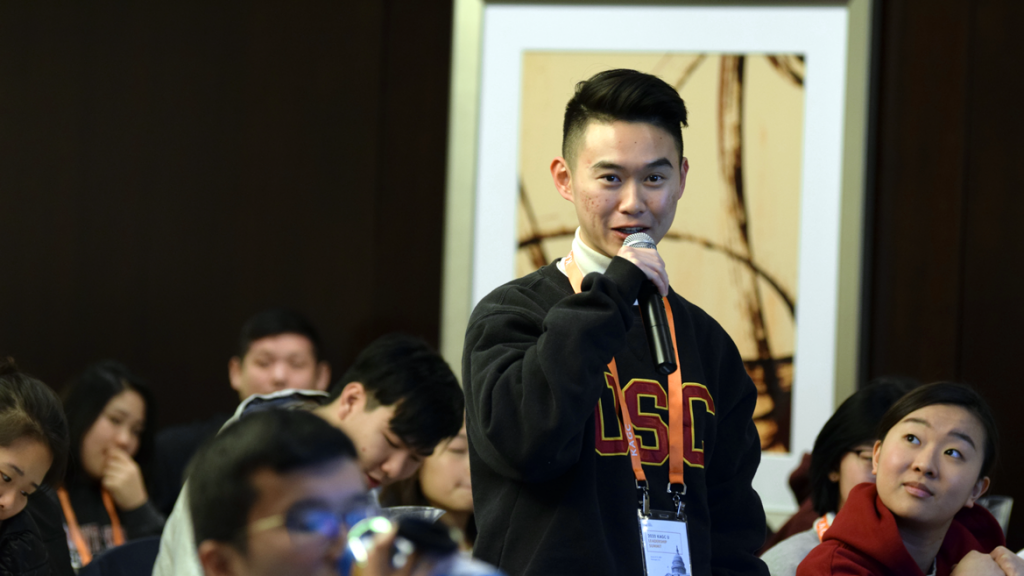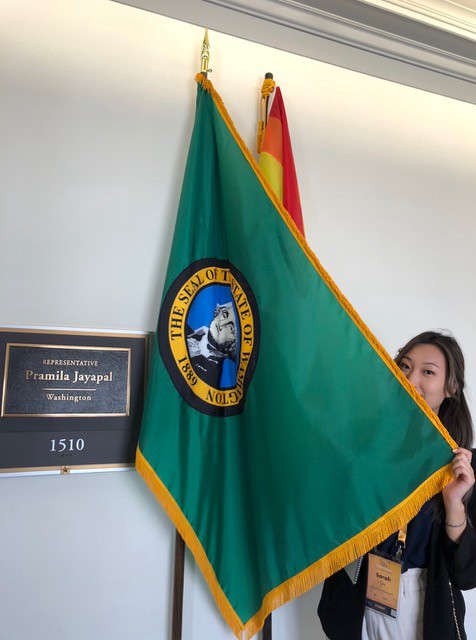Just like many other Asian-Americans, Korean-Americans are often asked the same questions over and over again. “Where are you really from?” “How are you so good at English?” “Are you from North Korea or South Korea?” These are just a few questions that the average Korean-American might have to answer multiple times throughout their lives.
For the most part, these questions don’t come from a heart of malevolence. They are typically genuine questions that stem from curiosity, but also some ignorance. They are rooted in stereotypes that have plagued Asian-Americans for centuries, and though people who may ask these questions mean no harm, they are contributing to an image of the Asian-American community that perpetually portrays them as “foreigners” and the “other.”
Where do these stereotypes come from? What are people’s personal experiences with these stereotypes, and how have they played out in their day-to-day lives? And where is the Korean-American identity heading towards in the future? These are all questions that need to be thoroughly examined in order to truly examine the Korean-American experience.
Where Are You Really From?
Korean-Americans are not the only people who get asked this question fairly often; this is an experience that is typical of most Asian-American communities. Why is it that Asian-Americans so commonly have to answer to this?
For one, Asian-Americans are often seen as foreigners, even if they are born and raised in America. Susie Woo, a professor of American Studies at California State University Fullerton, explains that this question is directly related to U.S immigration history. Despite having been born in Los Angeles and raised in California, Professor Woo has personally gone through conversations that go like this:
“Where are you from?”
Professor Woo: “I was born in California, and I’ve lived my whole life in the United States.”
“No, but where are you from from?”
Professor Woo: “Oh, well, my parents immigrated from Korea.”
Why is this such a common experience for Asian-Americans? Professor Woo goes all the way back to the 19th century to answer this question.
The Chinese Exclusion Act of 1882
The general Asian experience in the United States is strongly tied to the wave of Chinese immigrants traveling to California to strike rich during the gold rush. Professor Woo says that Americans and Chinese immigrants initially got along just fine, but as the gold began to dry up and many people found themselves stranded in California without any money left, anti-Chinese sentiment began to grow in the area.
For one, the Chinese were seen as very “peculiar” in the eyes of Americans, and as these immigrants began to look for low-skill labor jobs in mining fields and railroads, employers began to take advantage of them by paying them less than other workers. Many European immigrants began to resent the Chinese, blaming them for taking away Californian jobs. As anti-Chinese sentiment grew stronger, the Chinese Exclusion Act was passed in 1882, eliminating nearly all migration from Asia to the United States.
Asian immigration was practically non-existent until the early 1900s, when the United States began to expand into the Pacific. After Hawaii joined the Union, contract laborers from Japan, China, and Korea began to move in, looking for work mostly on sugar cane farms. Many of these Japanese immigrants used this move to Hawaii as an opportunity to eventually migrate to California and find agricultural work there. However, anti-Asian sentiment was already present in the United States because of its historical anti-Chinese immigration stance. These factors contributed to the passage of the Johnson-Reed Act of 1924, which once again cut off immigration from Asia entirely and barred Asians from naturalization.
War, Turmoil, and Immigration
All of this explains the origins of anti-Asian sentiment. So how does it tie in specifically to the Korean-American experience?
The Korean immigration experience began with Japanese imperialism. Japan had formally colonized Korea by 1910, and they shut down all possibilities for emigration for ethnic Koreans. This essentially shut down all Korean travel to anywhere in the world until 1945, when Japan was defeated in World War II and Korea finally gained its independence.
The sweet taste of liberty wouldn’t last very long, however. As Professor Woo mentions, the “Domino Effect theory,” which is the idea that if one nation falls into communism its neighbors will fall as well, inevitably led to American occupation in the Korean peninsula as they strongly resisted Soviet influence in the region.
“The Americans believed that if Korea falls to communism, it opens the door for the rest of Asia to fall into communism,” said Professor Woo.
The tension between Soviet and American forces led to the breakout of the Korean War in 1950, where 3 million Koreans would die (which was 17% of the entire ethnic population). By the time the war ended with an armistice in 1953, economic and social devastation left many Koreans with no option but to leave their homeland and find a job in the United States.
After the tragic war leaving Korea divided, it was unthinkable for many Koreans to even consider staying put. Buildings were left in destruction, political insecurity was a cause for great fear, and the rise of a military dictatorship were all enough to push a trickle of Koreans into the United States.
This trickle turned into a stream of immigration after 1965. The Immigration and Naturalization Act of 1965 was the main cause of this, as this legislation provided two clauses for Koreans to migrate into the United States: the Reunification Clause was specifically tailored to families that had been separated because of the Korean War, while the Occupation Clause was used to fill employment needs for American businesses, both for low and high-skilled labor.
With families slowly moving in and young adults finding economic opportunities in America, more Koreans found it unreasonable to stay behind in Korea. Despite all the anti-Asian sentiment that was prevalent in the United States, many Koreans were incentivized to migrate for familial and occupational reasons.
With the United States legally opening up its immigration system specifically for Koreans, the Korean-American population grew significantly, and by 2009, there were over 1 million Korean-Americans in the United States.
The Stereotypes
After looking at this historical context, it is clear that the stereotypes that exist about Koreans and Asian-Americans in general are all rooted in the idea that Asians are deemed “peculiar,” “exotic,” and the “other” throughout American history.
The supposed “success” of ethnic groups such as Koreans have also promulgated the model minority myth, which is the idea that Asians are an example of a minority group “pulling themselves up by their bootstraps.” Asians are believed to be people who stay quiet, don’t complain, and just work hard.
This harmful myth has pitted Asians against other minority groups. This narrative has been used to tell African-Americans and Latinos that they just need to work harder “like the Asians do.” Not only does this argument ignore historical differences and injustices that these minority groups had to face, but it also inaccurately depicts Asian-American “success.”
Professor Woo correctly says, “Not all Asian-Americans are doing well. Not all Asian groups are doing well.”
Within the broader Asian-American context, there are so many different reasons why Asians might migrate to America. Many of the Korean and Japanese immigrants tend to be more affluent because they migrate for occupational reasons, while many Cambodian or Laotian immigrants leave their homeland simply to escape communism or dictatorships.
Because of this, Korean-Americans are often believed to be the “model of model minorities.” Their perceived financial success and assimilation into American culture has only fed into America’s toxic racial relations.
Co-founder of Korean Americans Mobilizing (KAM) and former USC student Lucas Uhm believes that racial reconciliation between Koreans and other minority groups can be a reality if everyone looks past these false and harmful theories about the “model minority.”
“We need to focus on historical efforts of cooperative movements for justice and freedom,” Uhm said. “Look at the Civil Rights movement. Lots of Asians stood by African-Americans to fight for liberty, and that type of cooperation was what made that movement so successful. Yuri Kochiyama was a Japanese activist who worked closely with Malcolm X. Grace Lee Boggs was another activist who worked with communities of color. We need to focus on cooperation and unity in the past.”
The model minority myth also creates the idea that there isn’t enough space in this nation for all minority groups. The fight for justice is thus made a competition between ethnic minorities, when in reality, there is enough space for all minority groups to win.
“This isn’t a zero-sum game,” Uhm noted, “We all lose when we fight each other because all we do is silence each other when we fight. We all win when we can work together.”



